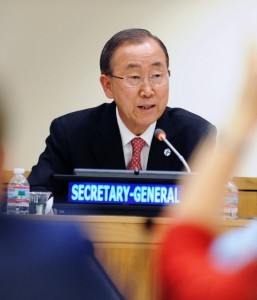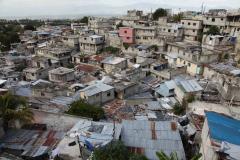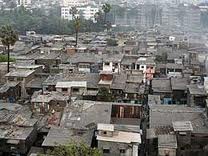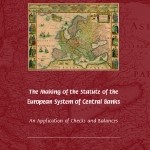Mark Napier – Africa’s Growing Cities: How Do People Adapt?
 eldis.org. October 2014. With World Habitat Day on October 6, Dr. Mark Napier provides a timely insight on the urgent need to address unequal access to land and property. Specifically he reflects on how African cities grow and the way poor people can integrate themselves into urban economies – as explored in more detail in his recently released book, Trading Places: accessing land in African cities.
eldis.org. October 2014. With World Habitat Day on October 6, Dr. Mark Napier provides a timely insight on the urgent need to address unequal access to land and property. Specifically he reflects on how African cities grow and the way poor people can integrate themselves into urban economies – as explored in more detail in his recently released book, Trading Places: accessing land in African cities.
Debates about housing and land in African cities have tended to take place around a few key themes: rapid urbanisation, lack of urban planning, limited investment in urban infrastructure, the formation and perpetuation of slums, inappropriate building standards, insecure tenure and evictions, and poor living conditions, to mention a few. The Millennium Development Goals gave high priority to the issue by aiming to improve the lives of many people living in slums. More recently the discussion has grown to encompass the predicted effects of climate change, vulnerability to a variety of urban disasters, and what to do about this at a city-wide level. Many agencies are mulling this over when discussing how to frame the Post-2015 Agenda.
Read more: http://www.eldis.org/go/africa-s-growing-cities
‘Give Slum Dwellers A Voice’, Secretary-General Says In Message For World Habitat Day
New York, 6 October 2014. UN Secretary-General Ban Ki-moon’s message on World Habitat Day, to be observed on 6 October:
Over the past decade, efforts under the Millennium Development Goals have cut the proportion of people living in slums by more than half. Yet, over the same period, rapid urbanization, especially in the developing world, has seen overall slum populations rise. In some parts of sub-Saharan Africa, as many as 70 per cent of urban dwellers live in slums and informal settlements.
Slums are often located on the least desirable and appropriate land, such as flood plains and steep hillsides, and are inherently vulnerable to the increasingly severe weather events that climate change is causing. Many of the people who inhabit slums were pushed to migrate by the lack of opportunities in rural areas or their countries of origin. They regularly lack basic services such as water, sanitation, electricity and street lighting. Crime is often endemic, with women and girls particularly at risk. Unemployment, underemployment and the cost of transport to distant places of work add further hardship.
To achieve sustainable development and a life of dignity for all, we must address these issues. This year, World Habitat Day is devoted to giving a voice to slum dwellers. Often, people in the slums live in near-anonymity — no address, no census and no idea when their living conditions will improve. By learning from their experiences, city planners and policymakers can enhance the well-being of a significant portion of the human family. Let us hear from people who live in slums what has worked and what has not — and what we need to do.
Read more: http://unhabitat.org/give-slum-dwellers-a-voice
Alan Mwendwa – UN Urges Widespread Improvement Of World’s Urban Slums
urbangateway.org. October 2014. With a quarter of the world’s population living in urban slums, a sustainable response to improving the living conditions of the urban poor is becoming increasingly necessary, the United Nations agency tasked with promoting environmentally and socially sustainable cities and towns said today.
In a press release made available ahead of World Habitat Day, UN Habitat warned that urban poverty was not just a present problem affecting today’s metropolitan environments but “an ever-growing concern posing development and humanitarian threats to humankind.”
The theme of this year’s World Habitat Day, observed annually on the first Monday of October, is Voices from the Slums – an effort to highlight the hardships of slum living through the voices of the urban poor while also giving rise to their experiences and ideas about improving their living conditions.
The UN agency voiced hope that the upcoming observance would also contribute to a policy dialogue that focuses on the broad range of issues related to the integration of life in the slum into the city; identify policy formulation and capacity development issues in which the UN can offer significant contributions; and identify key stakeholders in slum upgrading and adequate housing and actively engaging them in further discussions.
Read more: http://www.urbangateway.org/un-urges-widespread-improvement
Sir Peter Hall – Reflections On A Lifetime Of Town Planning
theguardian.com. October 2014. At the beginning of the first world war, town planning was very much in its infancy. Indeed, one hundred years on, it is hard to appreciate how modest were the beginnings of planning as a profession, and as a subject for university education. Very few local authorities had the resources to secure the services of a professional, even had they desired to do so.
Later, during the government’s post-war reconstruction, when priority was given to the preparation of local authority housing schemes to meet a national need for some 40,000 additional homes, planning was left behind again. It was only in the 1960s, when the relationship between the sciences and architecture was realised, that academic research became at all significant in the field of planning.
The late ’60s saw a planning boom. There was a national plan, and a second wave of new towns including Milton Keynes, Northampton and Peterborough came into being. Every region had a Regional Economic Planning Council; the south-east strategy proposed to link London to these new towns, and to other major developments at the edge of the region, by discontinuous growth corridors along main railway lines and the motorway network, then in mid-construction. In 1967, the peak year for housing completions in the UK, local planning departments were being reorganised to take on the challenges, staffed by multiskilled young planners who were emerging from fast-expanding planning schools – including new and unconventional ones – with radical new curriculums.
Go to: http://www.theguardian.com/sir-peter-hall-reflections
Nick Hedges – Below The Poverty Line: Slum Britain In The 1960s – In Pictures
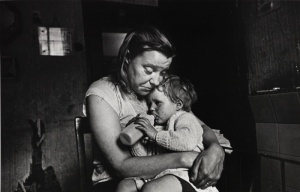
Mrs T and her family of five lived in a decaying terraced house owned by a steelworks. She had no gas, no electricity, no hot water, no bathroom. Her cooking was done on the fire in the living room. Sheffield, May 1969.
Photo: Nick Hegdes – Guardian
Photographer Nick Hedges travelled from Birmingham slums to Glasgow tenements in the 1960s and 70s to document poverty-stricken Britain. He found families who slept with the lights blazing to keep the rats away, children sleeping on wet floors and mothers cooking over an open fire.
Go to: http://www.theguardian.com/slum-britain-in-the-1960s
Michael Regnier – Life And Health In Delhi’s Slums
mosaicscience.com. September 2014. The smell of urine and human excrement betrays the entrance to the slum. There is a line of fresh turds alongside the main road. Most look healthy enough; a couple are what you might call loose.
Dilip Jha admits to feeling nervous. Ben Gilbert (Mosaic’s photographer) and I have asked him to show us around Delhi, including its slums to see where some of India’s poorest rural-to-urban migrants live, so Dilip, a senior research project manager at the South Asia Network for Chronic Disease, has brought us to Sector 7.
We turn left, down a side road, except that this street marks a social, political and moral boundary between two superposed cities. Ben and I walk about 50 metres before Dilip quietly but urgently suggests we go back to the main road.
At the junction, Ganchem sells freshly squeezed orange juice. Like everyone else in this slum, he is from Rajasthan and, like everyone else, he specialises in drumming at functions and weddings. It is only ever part-time work, so people have other jobs, often house-painting. They have done well to secure painting and drumming as their niche – other slums might specialise in rag-picking, bringing the city’s rubbish home on handcarts and sorting through it for plastic or paper scraps they can sell for a pittance. Migrants often find the only opportunities to make a living are doing the jobs too dirty, degrading or dangerous for anyone else.
Read more: http://mosaicscience.com/life-and-health-delhi-slums
- Page 3 of 3
- previous page
- 1
- 2
- 3


